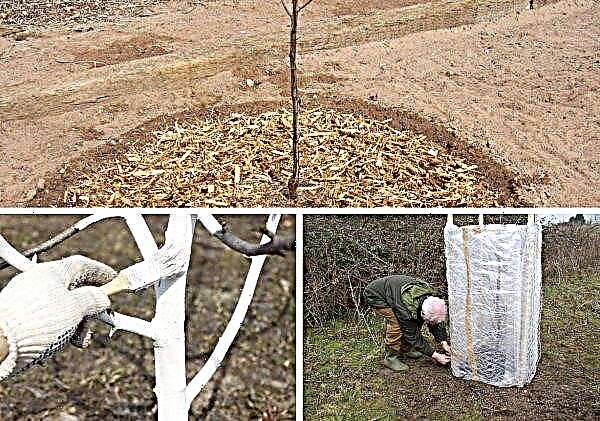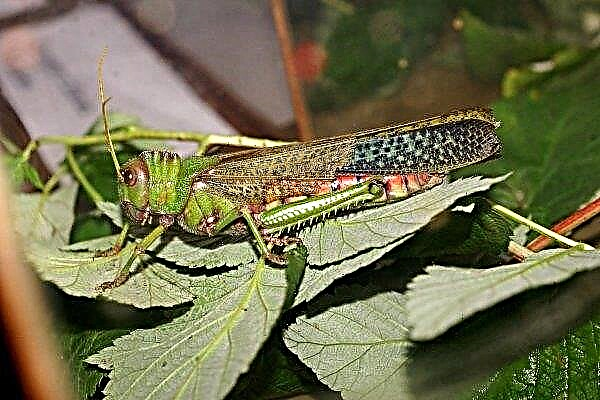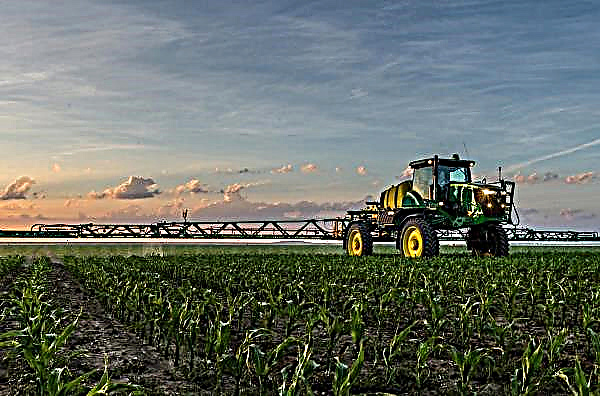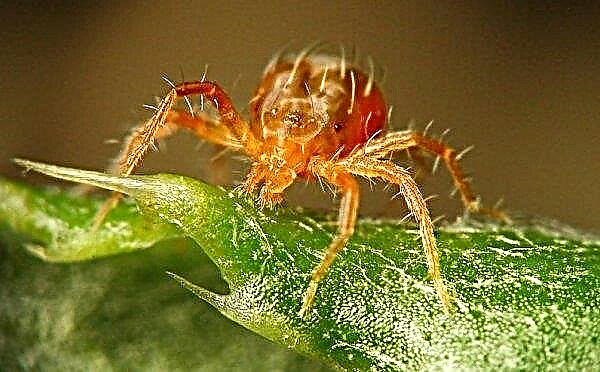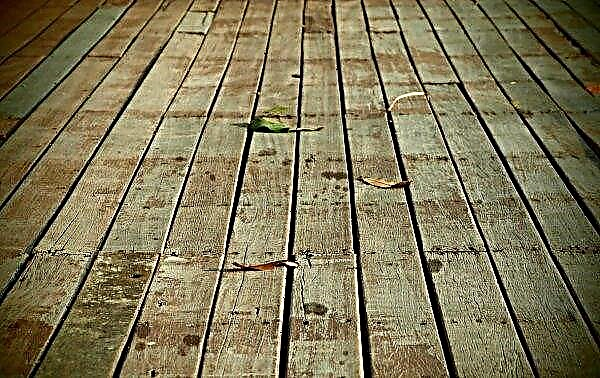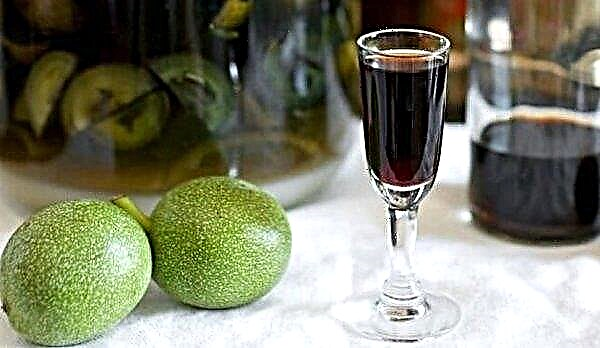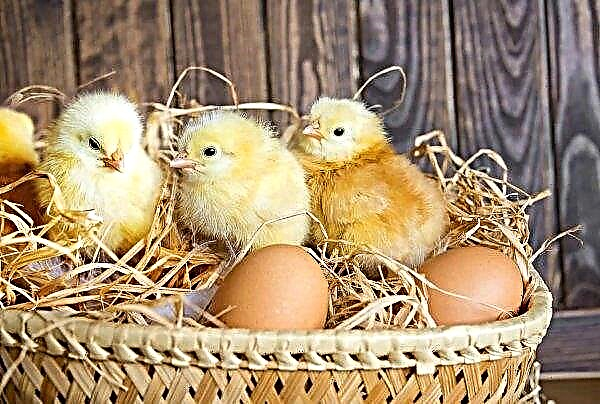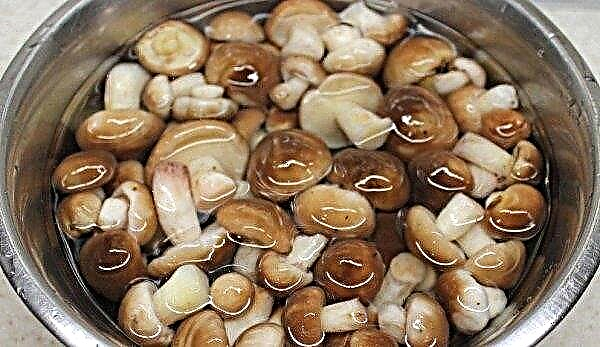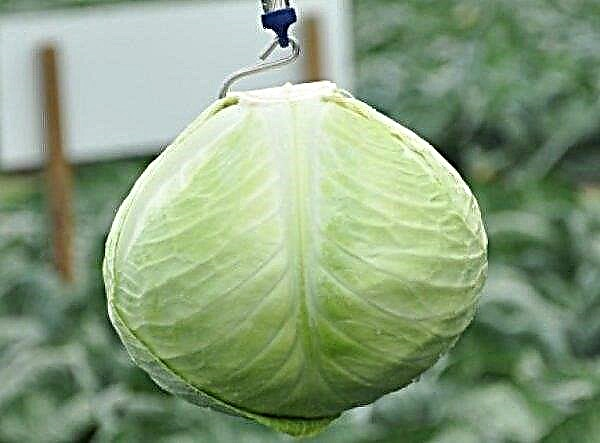Since the domestication of geese in Egypt more than 3,000 years ago, they lived in a very warm climate. However, geese have now become inhabitants of farms around the world, including in the temperate climate zone. About how to keep these thermophilic birds in winter - read in this review.
Winter geese requirements
Geese are the owners of a thick layer of fluff, which helps them retain heat even at the lowest temperatures. Therefore, the birds do not freeze and feel no worse than people in down jackets. But, of course, a large amount of fluff is not all that is necessary to keep the birds warm at temperatures below 0 ° C.
If geese are kept in a barn, you need to ensure that they have enough water and feed. The goose flock strictly follows the hierarchy, so some farmers set up several feeders and drinkers in order to be sure that all birds have enough food. When compiling the ration, it is also taken into account that birds that walk around the yard can find food until snow falls on the ground. In winter, geese will need:
In winter, geese will need:
- winter food, which will make up for losses from the lack of greenery;
- warm drink, because additional energy is spent to absorb cold water;
- insulated house to help maintain body temperature.
The presence of these 3 components will be enough to ensure that all geese feel good.
Where you can keep geese in the cold season
Geese often warm up by tucking their legs and beaks into their rich fluffy plumage. This is what they do if they are cold. Therefore, shelter from rain, wind and snow will be necessary for these birds. Dampness is especially dangerous for them, which means that the humidity in the places of detention should not be higher than 65%. As a winter living space can be used:
As a winter living space can be used:
- sheds;
- chicken coops;
- greenhouses.
Did you know? In ancient Rome, geese were used as guard animals. They always screamed about the appearance of strangers or animals.
In the barn
Typically, a barn is a room for domestic use, adapted for storing equipment, keeping animals or storing feed. The barn can be brick, wooden, adobe. To make birds comfortable, it is necessary to equip nests, feeders, drinking bowls in it and ensure good air exchange, the absence of drafts and lighting. Air exchange will be carried out using the supply and exhaust pipes. Slots caulk and warm the future house. Natural lighting is provided by the window, in addition, they also install electric light. The birds do not need additional heating, since they generate enough heat so as not to freeze in a warm room.
Air exchange will be carried out using the supply and exhaust pipes. Slots caulk and warm the future house. Natural lighting is provided by the window, in addition, they also install electric light. The birds do not need additional heating, since they generate enough heat so as not to freeze in a warm room.
- Advantages of barn maintenance:
- geese have a separate home;
- if the barn is insulated, then the cost of preparing it for winter is minimal;
- if the barn will be used as a caterpillar in the summer, then this will be a good choice of premises.
- The disadvantages of the content in the barn will be as follows:
- if the inventory is stored in it - it is not very convenient for birds and for hosts;
- during maintenance, the premises will be contaminated with excrement - the inventory and the barn itself will have to be washed thoroughly;
- cleaning and disinfection will be difficult and this can cause illness.
In the chicken coop
If hens live in the chicken coop, then the room can be divided into 2 sections and arrange part of the chicken coop for geese. This method also has its advantages and disadvantages.
- Advantages of keeping in a chicken coop:
- minimal cost of finance and time - it is enough to equip nests, install drinking bowls and feeders;
- lighting, insulation and ventilation are fully prepared.
- Disadvantages:
- geese are large birds, therefore, conflicts between representatives of different species may occur in the chicken coop;
- disease prevention and disinfection are becoming more complicated, as birds react differently to the same pathogens;
- most chickens roam in a calm environment, and the presence of other birds can be a factor that will contribute to a drop in egg production.
Did you know? Geese love water, but can live without it. A wide bowl to dip his head and drink, a goose will be enough. In summer, farmers use small tanks to organize geese pools. And the water from the pool is suitable for fertilizing the garden, since it accumulates a certain amount of manure.
In the greenhouse
A modern heated greenhouse can also become a winter home for geese. The basic idea is that in nature, birds and plants coexist and do not harm each other. The greenhouse is very light and usually equipped with ventilation.  On a sunny day, the air in the greenhouse heats up quickly, so it is often used to organize the house.
On a sunny day, the air in the greenhouse heats up quickly, so it is often used to organize the house.
- Advantages:
- a sufficient amount of heat, light and space;
- goose excrement will fertilize the soil;
- chemical reactions in fertilized manure soil eradicate rot and pests;
- birds will perform high-quality aeration of the soil.
- Disadvantages:
- so that the eggs do not freeze, the nests are set at a low height, for example, on bales with hay;
- plants that are not protected from geese can be damaged during the search for insects by birds;
- on sunny days, birds can overheat;
- large amounts of ammonia in the litter can kill plants.
Did you know? The first farmer to use bird keeping in the greenhouse, “Riley Stark, whose farm is located on one of the many islands off the northwestern corner of Washington State.”
Walking organization
Geese need a daily walk of at least 1 hour. This helps them warm their feet and better absorb feed. Sedentary birds accumulate fat well, but poorly form muscle tissue. This is bad for geese - they have trouble laying eggs due to obesity. And it’s also bad if geese are grown for meat at the same time, since they are not very willing to buy very fat carcasses.
Walking can be arranged on a plot of the garden next to the house. The norm of the area is 10 square meters. m per individual. But geese can also walk in a smaller space. To prevent freezing of paws, snow and ice are removed from the area for walking. It is important not only what temperature the geese can withstand, but the fact that their paws do not feel the cold and the birds can freeze them during such a walk. The walking area is fenced. The site is cleaned of snow and covered with bedding - straw or other material. Here are installed feeders and drinking bowls. If the paddock is not equipped with a centralized drinking system, then you can install a tank with water. So that the water does not freeze, you can lower the heated stone into it. It will maintain normal water temperature.
Here are installed feeders and drinking bowls. If the paddock is not equipped with a centralized drinking system, then you can install a tank with water. So that the water does not freeze, you can lower the heated stone into it. It will maintain normal water temperature.
Walking at an air temperature below –15 ° C should last no more than 1 hour. But at a temperature just below 0 ° C in sunny weather, birds can spend almost the entire daylight hours walking.
Feeding geese in the winter at home
In winter, geese need more nutritious food. Therefore, farmers include a mixture of wheat, corn, oats, barley and a small amount of flax in the winter diet. Oats are preferred, as other types of grain contribute to the rapid gain in weight and fat. It is also necessary to maintain a high content of vegetable proteins in the feed for birds that are grown for meat. This will help grass meal from alfalfa or other meadow grass. The drinker should be heated with water up to +10 ° С. If the water does not heat up, then it will have time to freeze in a day. Dehydration negatively affects livestock. The size of the cup is also important. If you do not use a nipple drinker, then the size of the container should be such that it is convenient for the bird to lower its head into it, but not enough to try to swim in it. Otherwise, the water will be sprayed and the goose may be injured. These birds can also eat snow, but you should not give it on purpose or use it as the sole source of drinking water.
The drinker should be heated with water up to +10 ° С. If the water does not heat up, then it will have time to freeze in a day. Dehydration negatively affects livestock. The size of the cup is also important. If you do not use a nipple drinker, then the size of the container should be such that it is convenient for the bird to lower its head into it, but not enough to try to swim in it. Otherwise, the water will be sprayed and the goose may be injured. These birds can also eat snow, but you should not give it on purpose or use it as the sole source of drinking water.
Important! Geese often rush at night and in the morning. Therefore, you need to collect eggs in the morning so that they do not freeze.
Diet
You can feed birds in November-December 2 times a day, and from January 3 times a day. Geese can be fed continuously 3 times a day, especially if they continue to lay eggs. In the spring, before the mating season, geese can be transferred to 4 meals a day to improve the quality of the resulting offspring.
Hay in the diet should be constant, at the rate of 300-350 g per day. In the morning, grain is poured into the feeders, and then during the day, root crops, concentrates and nutrient mixtures are added. The approximate daily feed rate for adult geese is (in grams):
The approximate daily feed rate for adult geese is (in grams):
- oats - 100;
- bran - 50;
- grass meal - 50;
- hay - 200;
- carrots - 100;
- potatoes - 200;
- meat and bone meal - 3;
- salt - 2.5.
The grain portion of the feed is crushed or whole. You can also germinate part of the grains - this will serve as an additional source of vitamins and minerals in the diet. Potatoes are usually given in boiled chopped form.
If what you would like to feed the bird is not included in the allowed list of products, then it is better to refuse such feeding. For example, a large amount of pumpkin in the diet is considered harmful and can cause diarrhea. At the same time, pumpkin and pumpkin seeds are natural anthelmintic.
Video: Feeding and watering geese in winter
It is definitely impossible to give to geese:
- moldy products;
- dirty root crops;
- waste from the diet of people.
Important! Grain in the feeders must always lie at night, as at this time the geese continue to feed. They can even eat more food than during the day.
Vitamin Supplements
Herbal flour significantly enriches the diet with vitamins. Dried herbs almost do not differ from the green mass in terms of nutrient content. They are an excellent protein and vitamin supplement that is well absorbed and digested. The daily diet of herbal flour can be from 30 to 50 g per 1 head, depending on the weight and age of the geese. Herbal flour can be added to wet mixers. It contains vitamins A, B, E, K, as well as calcium, iron, potassium and other minerals. The amount of vitamins depends on the composition of the herb. Clover, alfalfa, dandelion, plantain and other meadow plants are very useful. Some farmers also feed yeast in order to increase their vitamin content. When yeast in warm water with the addition of yeast, part of the grain is steamed. This enriches the diet with B vitamins. Yeast also improves pet appetite. The crushed berries of mountain ash, viburnum, and hawthorn will be a good addition to the main food. You can also add young twigs.
Some farmers also feed yeast in order to increase their vitamin content. When yeast in warm water with the addition of yeast, part of the grain is steamed. This enriches the diet with B vitamins. Yeast also improves pet appetite. The crushed berries of mountain ash, viburnum, and hawthorn will be a good addition to the main food. You can also add young twigs.
Did you know? Geese are used for integrated farming systems. - weed and pest control. They were widely used to control weeds on plantations of asparagus, berries, mint, tobacco, beets, beans, hops, onions and potatoes.
Winter Care
Winter geese care consists of:
- catering, rich in energy;
- compliance with the drinking regime;
- providing a warm room for living.
Its height is 20 cm. Such a volume of litter will provide birds with the main entertainment - the search for useful supplements to their diet. Large geese need an area of about 3 square meters. m per 1 bird in the house. The daylight hours must be at least 14 hours. This length of day is important for geese, especially during laying. Additional heating in the insulated house is not needed, because the birds emit enough heat to not freeze. To prevent diseases, they will need regular cleaning of the litter and periodic disinfection of pests.
Large geese need an area of about 3 square meters. m per 1 bird in the house. The daylight hours must be at least 14 hours. This length of day is important for geese, especially during laying. Additional heating in the insulated house is not needed, because the birds emit enough heat to not freeze. To prevent diseases, they will need regular cleaning of the litter and periodic disinfection of pests.
Therefore, in winter you need to monitor:
- purity of plumage - A scruffy feather may be a sign of illness;
- microclimate - the temperature in the house should not be lower than +5 ° С, and humidity should not be higher than 70%;
- lighting - at least 14 light hours;
- drinking regimen - at least 2 liters of water per day per 1 individual, and the water should be warm;
- walk - at least 1 hour at any air temperature;
- vitamins - add to the diet herbal flour, root crops;
- enough feeders and drinkers - so that all birds can eat normally.
- the presence of litter in the house and walking to prevent freezing of paws.
These requirements are extremely simple. And they are enough for the birds to be happy and healthy.
Disease prevention
In winter, geese are subject to 3 main problems:
- a natural decrease in immunity due to an imbalance in the diet;
- insufficient amount of physical activity that causes obesity and metabolic problems;
- colds due to hypothermia, dampness or drafts.
- Before geese settle in a gosladynik, it must be carefully removed and sanitized with a 2% solution of caustic soda.
- Litter should be changed as it becomes soiled, but no later than if it is contaminated by a quarter.
- Follow the bird vaccination schedule.
- To conduct regular prevention of infection with helminths and skin parasites.
- Observe quarantine for new birds.
- Avoid contact with wild birds.
- If a diseased goose is identified, it must be isolated from the herd and immediately consult a veterinarian.

Winter keeping of geese is not very difficult. Therefore, adhering to the basic rules of keeping, you will provide yourself with delicious meat and eggs, and your birds will be kept in excellent conditions.

